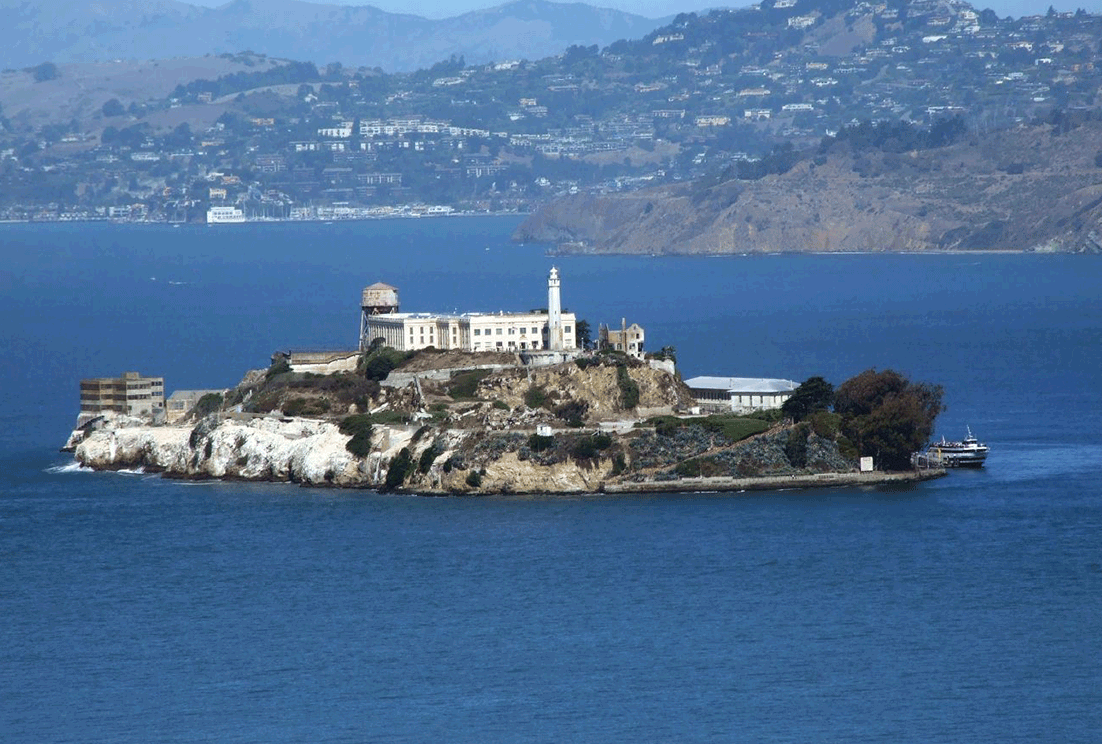On the night of Monday, May 5, former U.S. President Donald Trump once again captured the world’s attention. On his platform Truth Social, he announced the decision to reopen the legendary Alcatraz prison, which had been closed since 1963.
According to Trump, the facility will be “significantly expanded and rebuilt” and will house “America’s most ruthless and violent criminals.”
📢 “We will no longer be hostages of criminals, thugs, and judges who are afraid to do their jobs… Reopening Alcatraz will stand as a symbol of law, order, and justice,” Trump declared.
Symbolically, the revival of “The Rock” (as Alcatraz is often called) comes amid fierce debates in the U.S. over rising crime rates, immigration policy, and the role of law enforcement. But what does this move really mean? And why Alcatraz?
A Prison of Legends: What We Know About Alcatraz
Alcatraz is more than just a prison. It’s a cultural icon surrounded by myths, fear, and Hollywood glamor. Located on an island in San Francisco Bay, the facility began as a military fort in the 19th century and became a federal maximum-security prison in 1934.
Some of America’s most notorious criminals served time here, including Al Capone, George “Machine Gun” Kelly, and Alvin Karpis of the Barker–Karpis gang. The prison quickly earned a reputation as the toughest in the country. Cold, isolated, and tightly controlled, Alcatraz was considered escape-proof. Of the 14 escape attempts in its history, none were officially successful.
Yet even that didn’t save it from closure. In 1963, Alcatraz was deemed too costly and outdated. It was replaced by more modern—and supposedly more humane—correctional facilities.
A Prison of Legends: What We Know About Alcatraz
Alcatraz is more than just a prison. It’s a cultural icon surrounded by myths, fear, and Hollywood glamor. Located on an island in San Francisco Bay, the facility began as a military fort in the 19th century and became a federal maximum-security prison in 1934.
Some of America’s most notorious criminals served time here, including Al Capone, George “Machine Gun” Kelly, and Alvin Karpis of the Barker–Karpis gang. The prison quickly earned a reputation as the toughest in the country. Cold, isolated, and tightly controlled, Alcatraz was considered escape-proof. Of the 14 escape attempts in its history, none were officially successful.
Yet even that didn’t save it from closure. In 1963, Alcatraz was deemed too costly and outdated. It was replaced by more modern—and supposedly more humane—correctional facilities.

From Terror to Romance
Paradoxically, after its closure, Alcatraz found new life in pop culture. Films like “Escape from Alcatraz” starring Clint Eastwood and “The Rock” with Sean Connery and Nicolas Cage turned the prison into a symbol of defiance, bravery, and the pursuit of freedom. Tourists now flock to the island to walk the cold corridors, listen to the audio guides of former inmates, and experience the stark reality of 20th-century prison life.
And now, there’s an attempt to bring the prison back to life—not as a museum, but once again as a functioning penitentiary.
Between Reality and Politics
Trump’s idea is not just a legal maneuver—it’s a political message. The former president has increasingly criticized the judiciary, called for tougher immigration laws, and promoted a “law and order” approach.
Not everyone is impressed. Nancy Tang, chair of the San Francisco Democratic Party, told Politico that the plan is “stupid” and added: “For a country to demonstrate strength, it should not go back to the past. The days when Alcatraz was a functioning prison are long gone.”
Human rights advocates also express concern. They recall stories of brutality, inhumane conditions, and suppression of prisoners’ rights. To many, reviving Alcatraz is a step backward—a retreat from decades of penal reform and progress toward a more rehabilitative justice system.
For now, Trump’s decision is more of a bold declaration than a completed action. Ahead lie bureaucratic processes, budget battles, potential lawsuits, and a fiery public debate. Still, the mere fact that America is considering reopening Alcatraz as a real correctional institution speaks volumes.
Paradoxically, after its closure, Alcatraz found new life in pop culture. Films like “Escape from Alcatraz” starring Clint Eastwood and “The Rock” with Sean Connery and Nicolas Cage turned the prison into a symbol of defiance, bravery, and the pursuit of freedom. Tourists now flock to the island to walk the cold corridors, listen to the audio guides of former inmates, and experience the stark reality of 20th-century prison life.
And now, there’s an attempt to bring the prison back to life—not as a museum, but once again as a functioning penitentiary.
Between Reality and Politics
Trump’s idea is not just a legal maneuver—it’s a political message. The former president has increasingly criticized the judiciary, called for tougher immigration laws, and promoted a “law and order” approach.
Not everyone is impressed. Nancy Tang, chair of the San Francisco Democratic Party, told Politico that the plan is “stupid” and added: “For a country to demonstrate strength, it should not go back to the past. The days when Alcatraz was a functioning prison are long gone.”
Human rights advocates also express concern. They recall stories of brutality, inhumane conditions, and suppression of prisoners’ rights. To many, reviving Alcatraz is a step backward—a retreat from decades of penal reform and progress toward a more rehabilitative justice system.
For now, Trump’s decision is more of a bold declaration than a completed action. Ahead lie bureaucratic processes, budget battles, potential lawsuits, and a fiery public debate. Still, the mere fact that America is considering reopening Alcatraz as a real correctional institution speaks volumes.
We live in a time when the past returns not as memory, but as argument. As a symbol. And the question is—what kind of symbol does society want? A forbidding Rock with barbed wire, or a justice system striving to be more humane and just?







